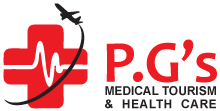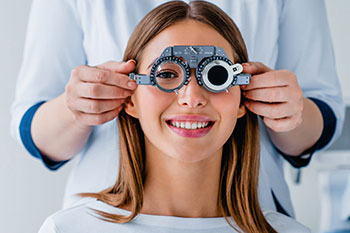You are here:
- Home
- ENT
ENT
ENT
ENT physicians, also known as Otolaryngologists are physicians trained in the medical and surgical treatment of patients with diseases and disorders of the ear, nose, throat (ENT), including problems with the sinuses and inner ear and related structures of the head, face and neck. Otolaryngologists diagnose, and treat specialty disorders as well as many primary care problems in both children and adults.
Otolaryngologists can treat a wide variety of conditions. Examples include chronic or fungal sinusitis, hearing loss, oropharyngeal cancer, facial and cranial nerve disorders and obstructive sleep apnea.
Ear conditions that otolaryngologists can treat include:
- Chronic ear infections
- Ear pain
- Impacted earwax
- Dizziness or vertigo
- Ear noise (Tinnitus)
- Hearing loss
- Ruptured eardrum
- Inner ear conditions
- Ear tumors
Nasal conditions that an otolaryngologist treats include:
- Allergies
- Rhinitis
- Sinusitis
- Postnasal drip
- Nosebleeds
- Nasal polyps
- Deviated septum
- Smell disorders
- Nasally obstructed breathing
Throat conditions that an otolaryngologist treats include:
- Hoarseness
- Sore throat
- Gastroesophageal reflux disease (GERD)
- Swallowing disorders
- Vocal cord disorders
- Laryngitis
- Conditions affecting the tonsils and adenoids
- Throat tumors and Snoring
The latest Technology used for ENT Treatment is
Acoustics and Speech Aerodynamics
ENT facilities are designed with the best acoustic technology, allowing physicians and researchers to better understand patient conditions and prescribe effective treatment.
Advanced Videostroboscopy
Using advanced video stroboscopy equipment, otolaryngologists take high-resolution photographs and slow-motion videos of a patient’s vocal cords during speech. This technology is critical to evaluating vocal cord abnormalities, developing effective treatment plans, and observing vocal cord dynamics after surgical procedures.
Audiology Testing
With audiometric testing on site, otolaryngologists are able to diagnose and distinguish between simple, reversible hearing loss and more permanent, nerve-based hearing loss.
Balance and Vertigo Analysis
This technology includes ENG (electronystagmography) and VAT (vestibular autorotation testing) equipment, which are frequently used to diagnose complex vestibular disorders.
Balloon Sinuplasty
Balloon sinoplasty offers a minimally invasive alternative to traditional sinus surgery for patients with chronic sinusitis. When gently inflated, the balloon opens the targeted sinus passageways to restore normal sinus drainage and function. Balloon sinoplasty offers many advantages, including improved safety and efficacy, less bleeding, and faster recovery time, and can be used in conjunction with other treatments and surgical procedures to reduce progressive disease. It does not limit the patient’s future treatment options.
Cochlear Implants
For patients with hearing loss due to cochlear damage, a cochlear implant may be the solution. A cochlear implant is an electronic device that relays sensory information through damaged sensory hairs in the cochlea. This device is surgically implanted and can significantly improve hearing.
Ear Microscopy
Ear microscopy allows physicians to zoom in and focus on specific areas of your ear. This magnification allows the precision necessary for physicians to examine and treat issues with the ear.
Endoscopy
Physicians use specialized endoscopic tools to better treat their patients’ conditions. An endoscopy instrument is a long, thin instrument with a camera and a light at the tip that allows doctors to see inside the body without major surgery.
Image-Guided Sinus Surgery
ENT specialists use advanced electromagnetic image guidance systems for sinus surgery. This procedure allows the physician to perform surgery with the maximum possible information about each patient’s unique anatomy and to see the relative positions of the surgical instrument tips within the sinuses during surgery. The procedure provides real-time images that help the surgeon navigate the sinuses to precisely remove diseased tissue while avoiding critical areas. This type of image-guided surgery has become the industry standard for many endoscopic sinus surgeries.
Radio Frequency Tonsillectomy
An alternative to traditional tonsillectomy, this procedure converts high-frequency energy to reduce the size of the tonsils. The probe is inserted into the tonsil tissue, allowing doctors to perform the procedure in a less painful outpatient setting.
Tongue Force Physiology
Tongue force physiology is a method used by otolaryngology professionals to detect and treat disorders that cause difficulties swallowing.
Transoral Robotic Surgery for the Treatment of Obstructive Sleep Apnea
The preferred treatment for obstructive sleep apnea remains non-surgical treatment with a continuous positive airway pressure (CPAP) machine. Robotic surgery is an impressive new option for patients who are intolerant or intolerant to CPAP therapy.
Get In Touch
Let’s connect and find better solution for your medical care
P.Gs is the leading medical tourism company providing medical assistance services in the world-class standard care of our associated hospital. We provide services in all the major metro cities of the country.
-
104 Paras Elegance Sardardham Lane Vaishnodevi
Ahmedabad - 382421 - +91-9723248384
- info@pgsmedtourism.com















